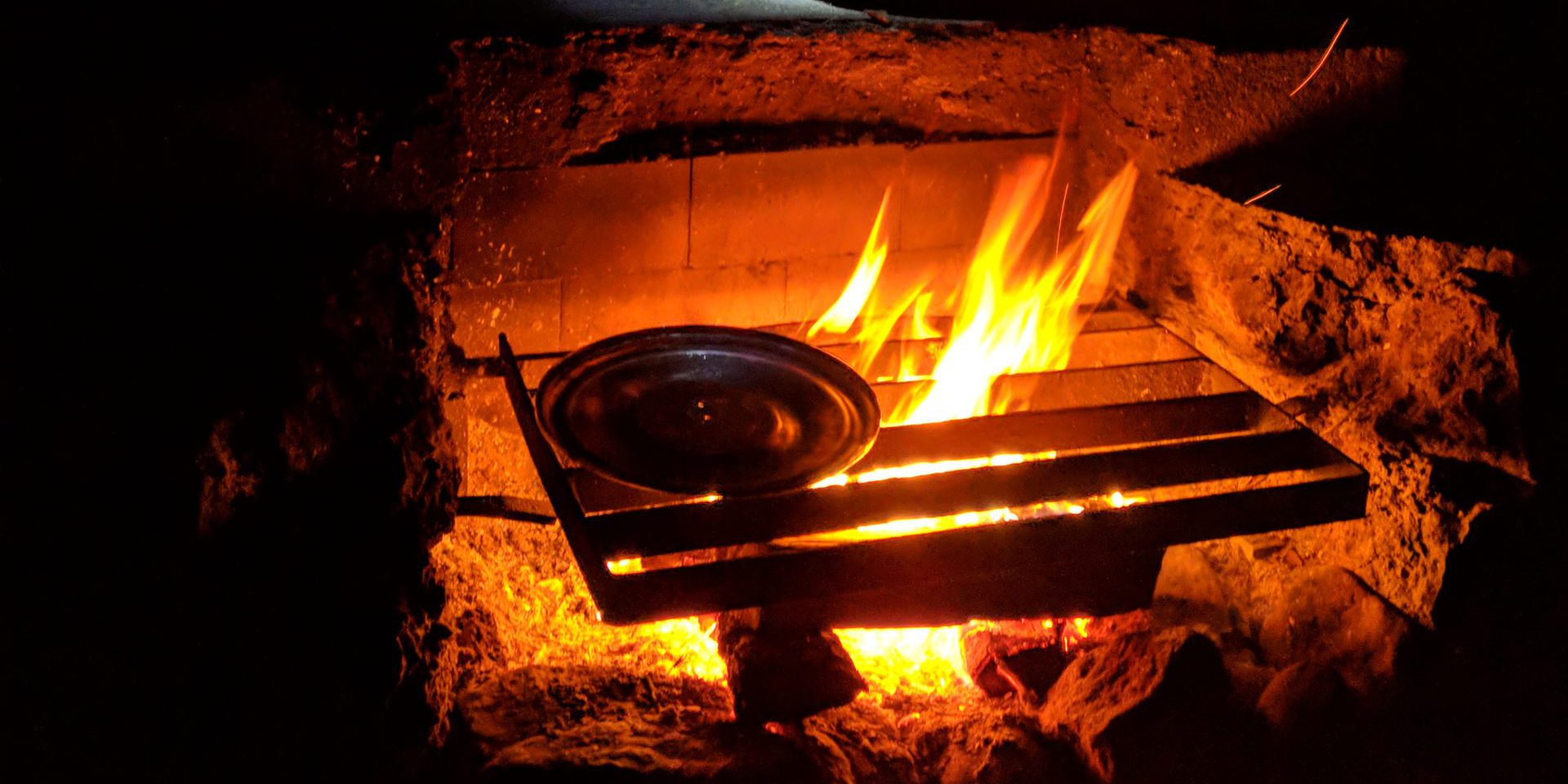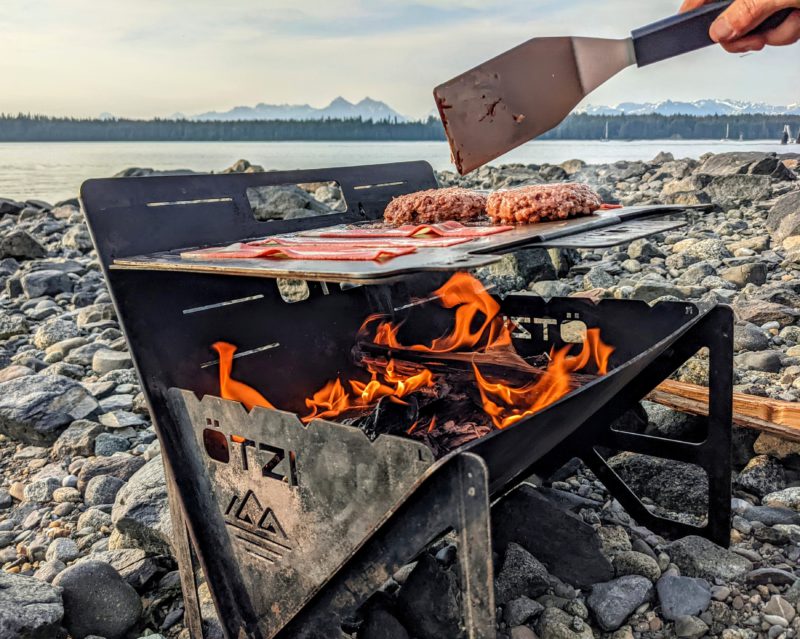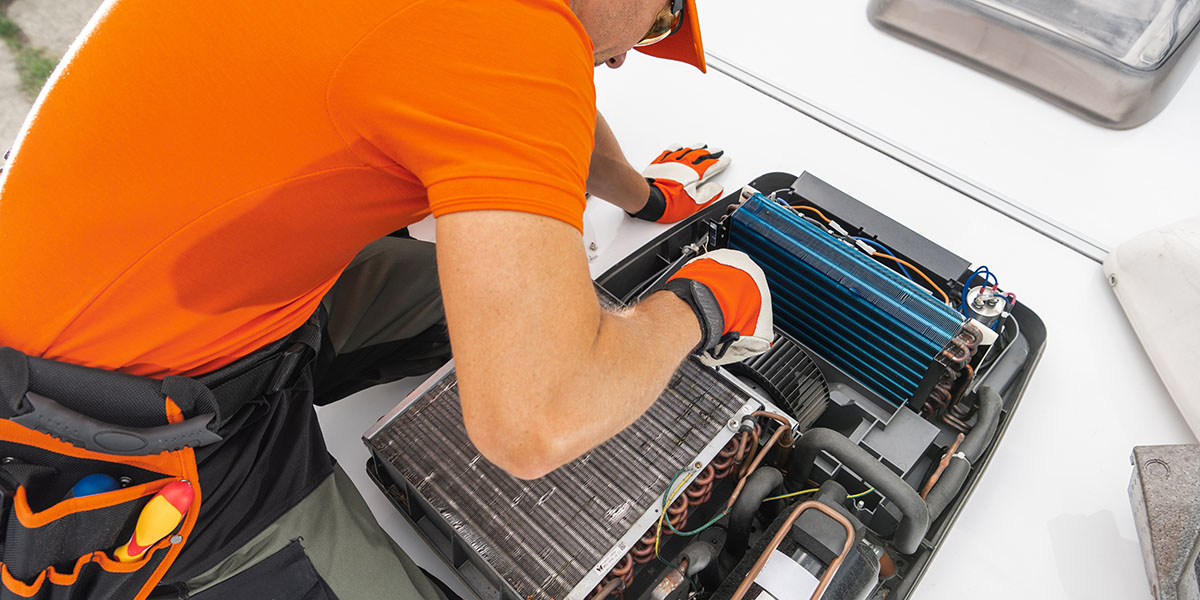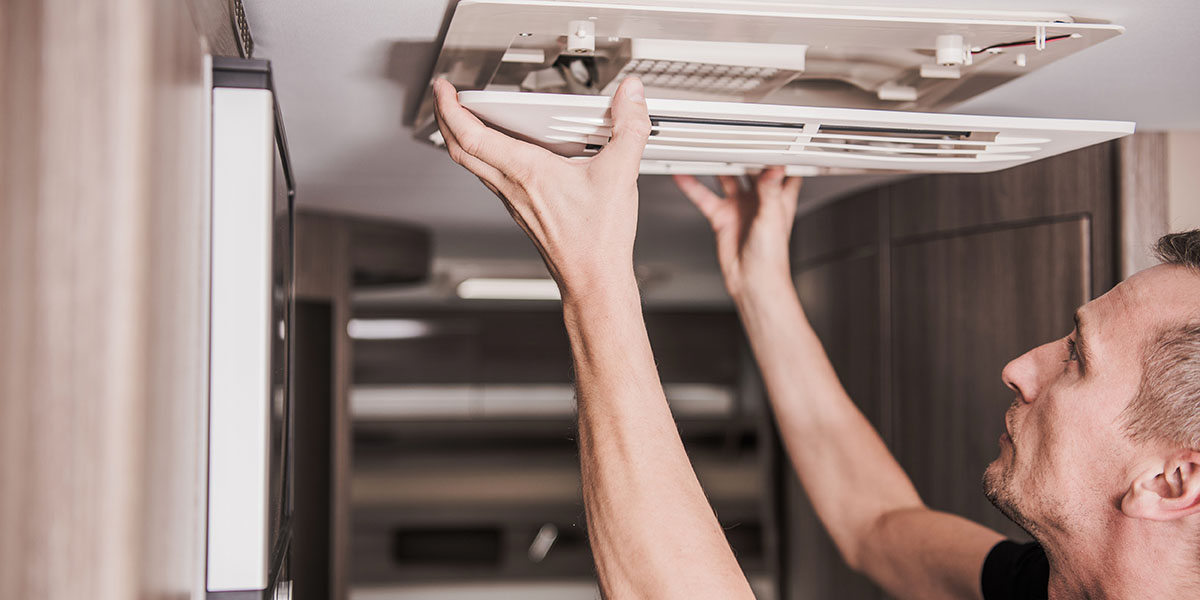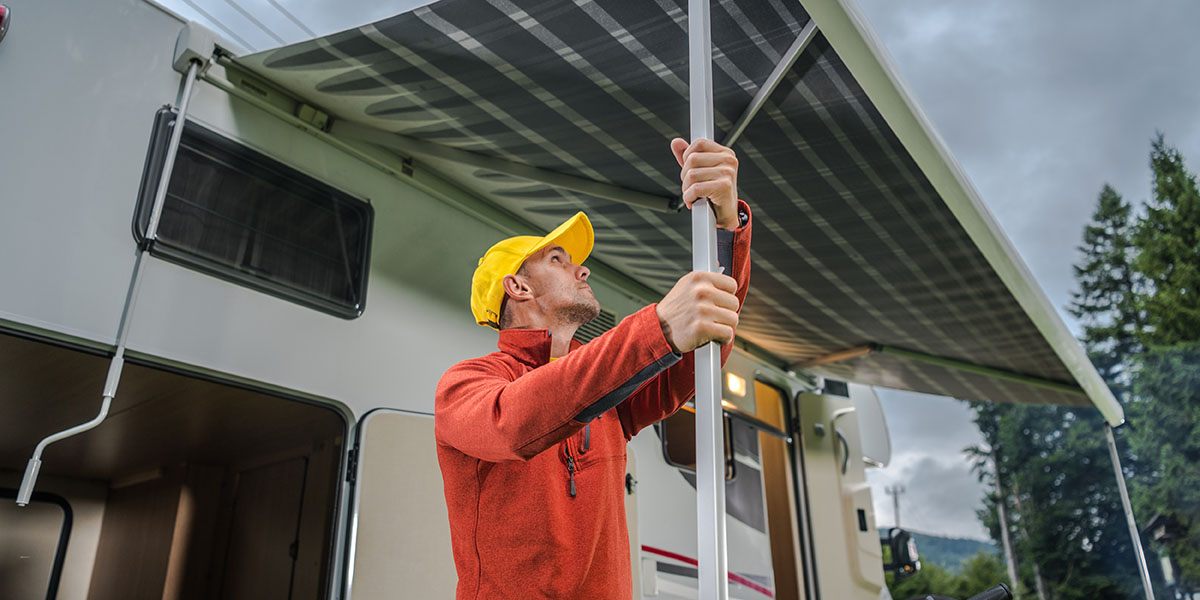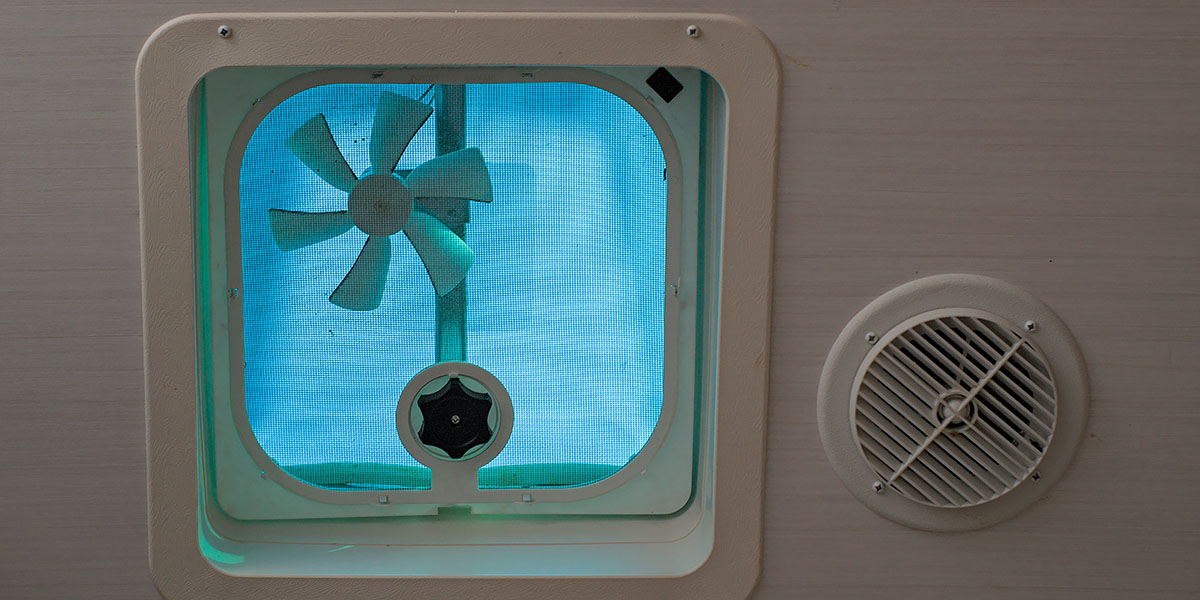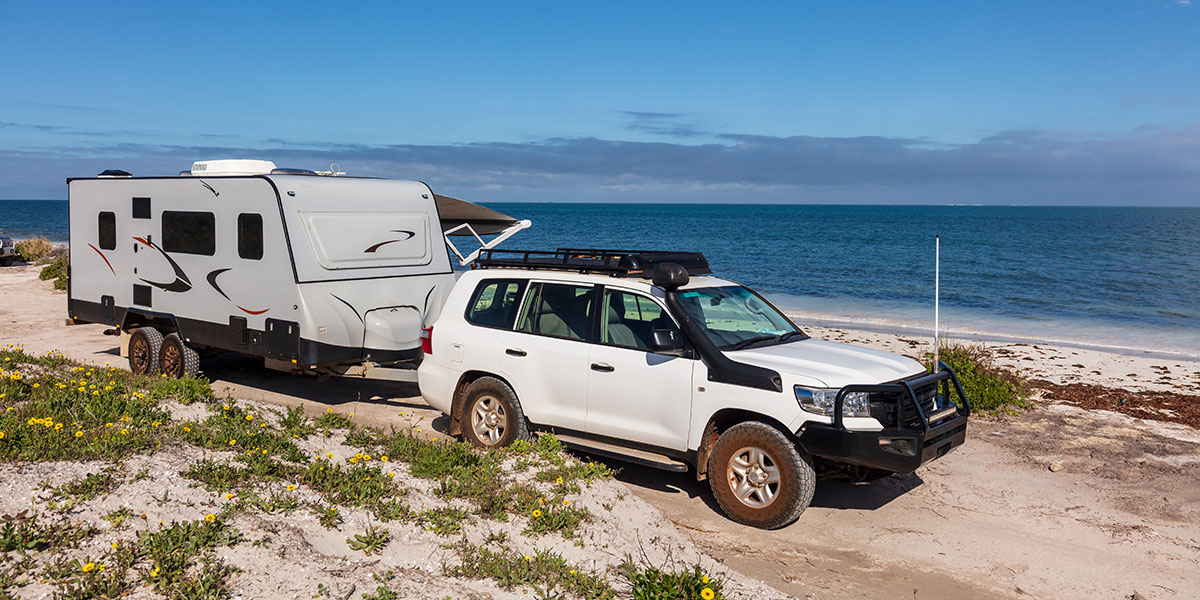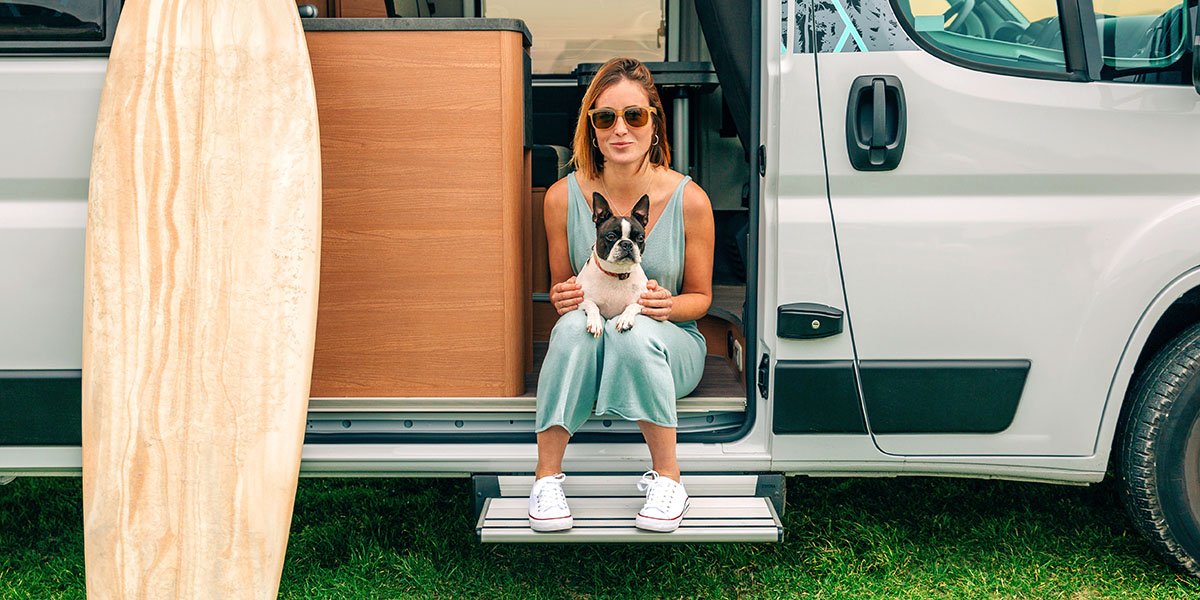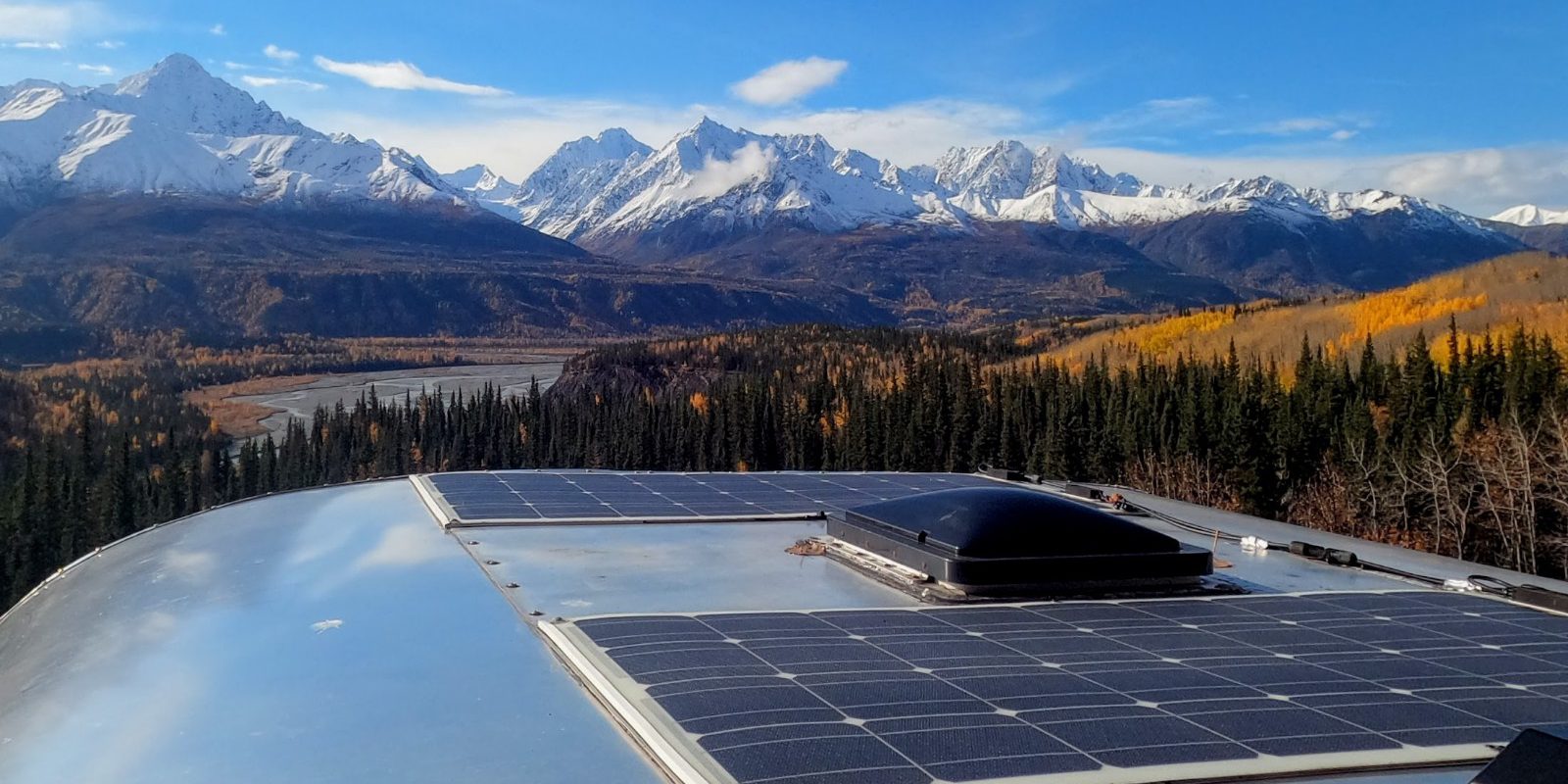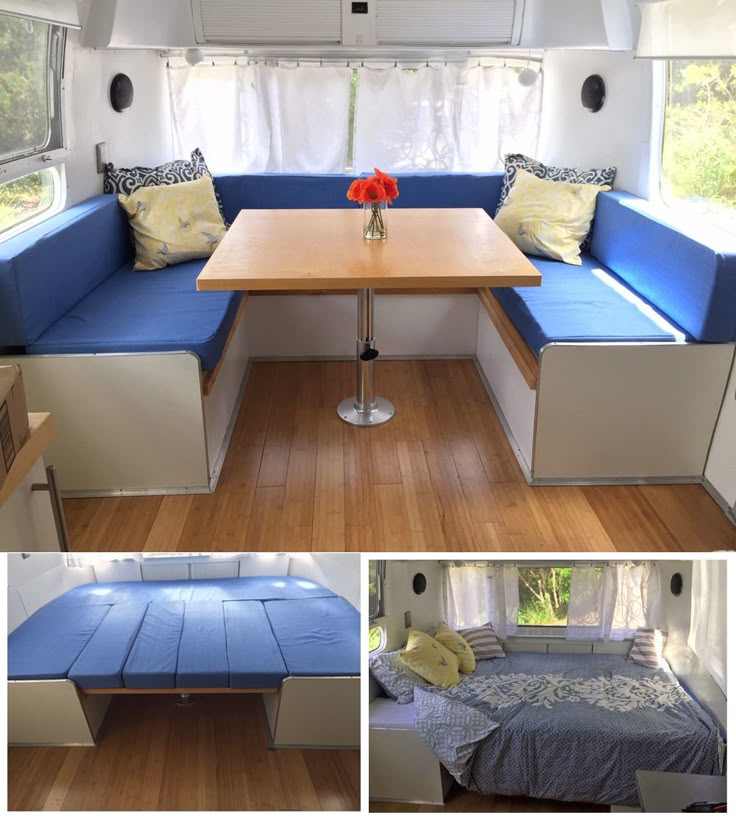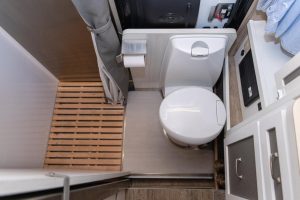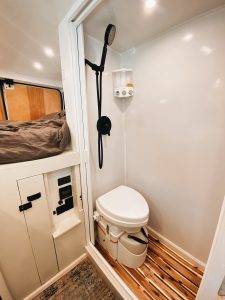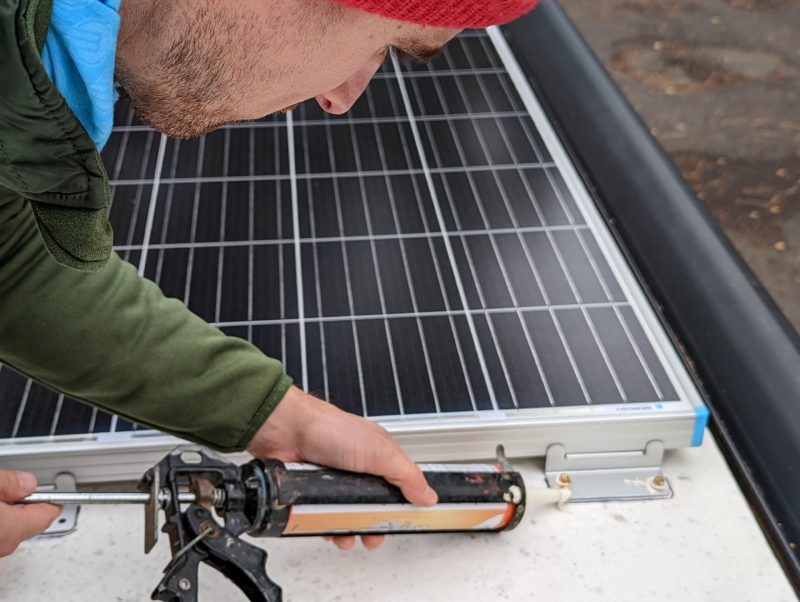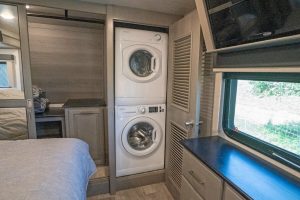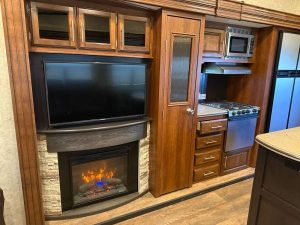As a kid, no camping trip was complete without a nightly campfire — naturally, of course, with a sugar high from heavy doses of a toasted marshmallow, melted chocolate, and graham cracker splendor. (Anyone else prefer the complete charring of the mallow, like me?) Nowadays, even though we rarely break out s’mores anymore, we love a good campfire on a chilly evening. (And, given the number of Hershey bar wrapper corners we find in campsites, it’s obviously still a thing.) Beyond s’mores, there’s something special about a campfire. And part of that is the danger of the flames — which should be a reminder why campfire safety is so important, even if you have an RV closeby.
You don’t have to be primitive camping to build a fire. There are lots of reasons for a fire. A little evening’s entertainment with a little extra warmth. Or, wisely, to satisfy your 10-year old during a much-needed, zero-screen time weekend in the woods. Our desire for fire lies deep within the human race. It’s primal, it’s fun, and — you guessed it — it also carries a huge responsibility along with it!
So, since we’re going to have a fire at some point, we need to talk about campfire safety.
Campfire Safety: As Relevant as Ever
We might be showing our age a little here, but when we were growing up, there was a Smokey the Bear commercial on TV. In it, a child questions his father about putting out their campfire, to which the father responds, “Nah, it’ll just burn itself out.” Smokey isn’t exactly happy with this response, and the tear rolling out of his eye isn’t from the smoke. Cue the melodramatic music. (Smokey also produced other commercial gems like this.)
Even today, after decades of Smokey ads, we regularly see tell-tale signs curling from fire rings where the occupants have already headed home. (Perhaps they took away the wrong message from that commercial?) Just walk the loop at any popular campground on a Sunday morning and you’ll see what I mean.
Anyone living to the west of the Mississippi valley may not ever remember a full summer without a burn ban. That’s because 85 percent of all wildfires are caused by humans. From discarded cigarette butts to illegal fireworks to dangling safety chains on your trailer, it’s no wonder wildfire managers have resorted to reducing campfires during the driest times of the year.
Having a good campfire experience is like having a good camping trip: It just takes a little forethought and preparation.
Before Building a Campfire
- Select the right wood. Always buy your wood where you plan to burn it. Traveling with wood from home is not only illegal in many places, it also gives invasive insects a free ride into a new location increasing their spread and putting our forests in danger.
- Research restrictions. Check for any fire restrictions or bans in the area before buying your wood.
- Choose the safest location. Here are a few good examples of how. Nearly every campground provides a campfire ring. Please use it. Also, in dispersed camping areas (aka boondocking), it’s important not to create additional fire rings. Use what’s there, or build a Leave No Trace fire pit using a Solo stove or OTZI grill. Give yourself enough space from any vehicles, tents or tarps.
- Be beach safe (if relevent). If building a beach fire, always build it below the high tide line. On shore breezes are stronger in the evening and beachside vegetation can easily ignite. So, keeping your fire closer to the water is always better. Also, any unburned remains of your fire will be washed away by the incoming tide. (A great Leave No Trace practice!)
- Clear flammable debris. Remove any dry leaves, twigs, and other debris within a 10-foot radius of the fire pit.
- Be ready to extinguish. Keep a bucket of water and a shovel nearby to extinguish the fire quickly, if needed.
Maintaining a Campfire
- Keep it small. A smaller fire is better for cooking and roasting marshmallows.
- Stay nearby. Never EVER leave a fire unattended.
- Don’t fuel the fire. Avoid using aerosols or flammable liquids to start or accelerate the fire. Pro Tip: save toilet paper rolls stuffed with dryer lint from home to create instant fire starters!
- Watch the embers. Keep a close eye on the fire and make sure embers don’t fly away and ignite surrounding materials. Soft woods with a lot of sap (like pine, spruce and fir) are great to start a fire with as they catch quickly, but they can also create more sparks that can spread fire outside of the ring.
- Observe the fire observers. Pay close attention to pets and children around any fire, not to mention those flaming balls of marshmallows being waved around on the end of a pointy stick. (I mean, what could go wrong?)

This photo is not real. This is a joke, a joke, joke. But you get the idea: You don’t want this to happen.
Extinguishing the Fire
- Complete the job. Completely extinguish the fire by pouring water on it, stirring the ashes and embers, and then pouring more water.
- Double-check. Make sure it’s dead out! The ashes need to be cool to the touch before leaving the area.
- Never bury the fire. Burying the fire can trap heat and cause it to re-ignite later!
IF things get out of hand: Remember, in emergency situations, it’s all too easy to focus on fighting the fire, but it’s important to get people to safety first and know when to call in reinforcements.
Additional Campfire Safety Tips
- Watch the weather. Be aware of weather conditions and avoid building a fire on windy days, as the wind can easily spread embers very quickly.
- Instruct the next generation. Teach children and others about campfire safety to prevent accidents.
- Offer good advice. If your brother-in-law, Earl, ever asks you to “hold my beer” around a campfire, remember nothing good will come of it. Better to remind him that he isn’t 18 anymore and that he should just sit down and enjoy the campfire. Camping trips should never end in a trip to the E.R.!
All of these tips and tricks seem common sense for most experienced campers, but it doesn’t take too much time to have a pleasant evening turn into a dangerous situation because of a few moments of inattention or risky behaviors. So, remember what Smokey the Bear said, “Only you …”
